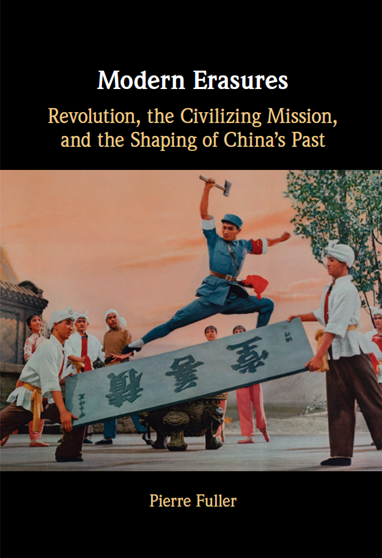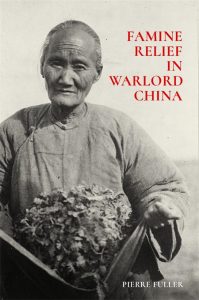
Modern Erasures: Revolution, the Civilizing Mission, and the Shaping of China’s Past, Cambridge University Press (2022).
(sommaire en français ici)
Modern Erasures builds on my first book (described below) in various ways. If Famine Relief in Warlord China is a microhistory focusing on famine responses in China a century ago, then Modern Erasures is a social history of ideas, of how dominant perceptions were formed about the nature of Chinese—and particularly rural—communities in times of crisis. It is, most fundamentally, a history of modernist discourse and ideological practice, focusing on Maoism. The book revolves around drought and earthquake in remote parts of China, such as Haiyuan in eastern Gansu (today’s Ningxia), a year into the tumultuous May Fourth movement of 1919 and a year before the first meetings of the Chinese Communist Party in 1921. In doing so, the book charts the pedigree of Maoist thought and practice over the half century between May Fourth and the CCP’s founding and the peak of the Cultural Revolution in 1969. It does this to shed light on the relationship between knowledge destruction and physical violence, book-burning and bloodletting, during China’s revolutions.
The book compares local cultural records on earthquake and famine-struck communities (what it calls communal memory recorded in gazetteers and, later, in Wenshi ziliao or Cultural and Historical Miscellany) with what it calls revolutionary memory of the recent Chinese past: the erasure of mutual aid and civic action in these same events in May Fourth and New Culture-era social surveys, the writings of missionaries and Western residents, including Nobel Prize laureates, liberal pedagogical texts, and Nationalist and Communist party doctrine. Through woodcuts, opera, and youth publications, the book then follows artistic, journalistic, and sociological work on rural life through the republican period into the campaigns of social reprogramming under Mao. Ultimately, Modern Erasures shows how the Maoist evocation of the “old society” earmarked for destruction was only the most extreme phase of a transnational, colonial-era conversation on the “backwardness” of rural communities.

Famine Relief in Warlord China, Harvard East Asian Monograph Series, Harvard University Asia Center, distributed by Harvard University Press (2019).
Little is still known about how China’s many thousands of rural communities conducted themselves during moments of crisis before the People’s Republic. My first book Famine Relief in Warlord China captures everyday life in Chinese villages, towns and cities a century ago by examining the varied responses to drought famine on the North China plain. One of the book’s main aims is to shed light on what Chinese communities actually did and did not do when millions of destitute neighbors or compatriots faced starvation due to spiraling grain prices over the winter of 1920-21. In doing so, the book seeks to shift academic attention away from international and institutional relief interventions in modern Chinese disasters towards activity along indigenous social networks. It does this for what it reveals about everyday values and social relations in an under-studied period between the fall of the Qing in 1911 and the rise of the Communist and Nationalist parties over the course of the 1920s.
journal articles
(2022) “Migration and State-Making: A Beiyang Settlement Scheme Along the Amur in 1921,” Twentieth-Century China Vol. 47 no. 1, pp. 30-39.
(2016) “Beyond International and Institutional Relief in Late 19th Century China: in Search of the Local”, European Review of History/Revue Européenne d’histoire, Vol. 22, no. 6, pp. 873-89.
(2015) “Writing Disaster: A Chinese Earthquake and the Pitfalls of Historical Investigation”, History Workshop Journal, Vol. 80, pp. 201-17.
(2015) “Changing disaster relief regimes in China: an analysis using four famines between 1876 and 1962”, Disasters, Vol. 39, Special issue 2, pp. 146-65.
(2013) “North China Famine Revisited: Unsung Native Relief in the Warlord Era, 1920-21”, Modern Asian Studies, Vol. 47, no. 3, pp. 820-50.
(2011) “‘Barren Soil, Fertile Minds’: Drought Famine & Visions of the ‘Callous Chinese’ circa 1920”, The International History Review, Vol. 33, no. 3, pp. 453-72.